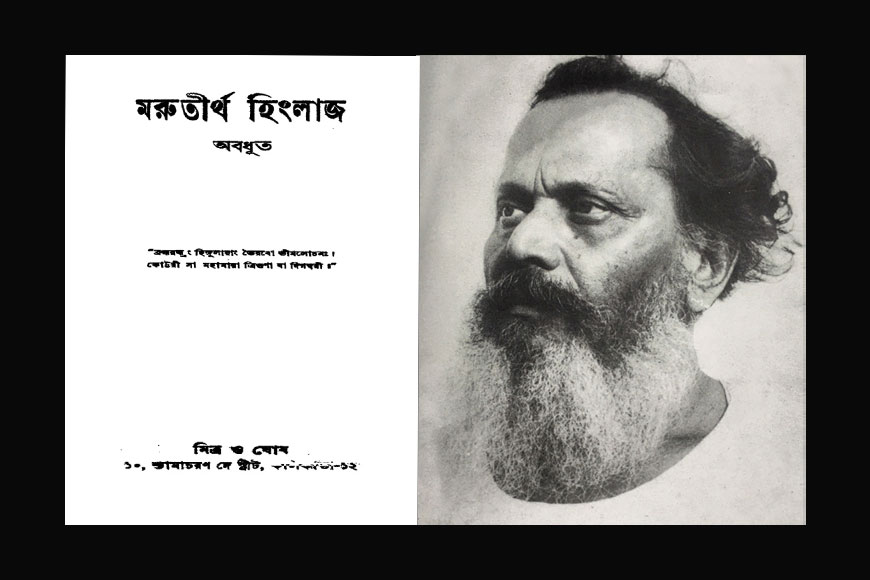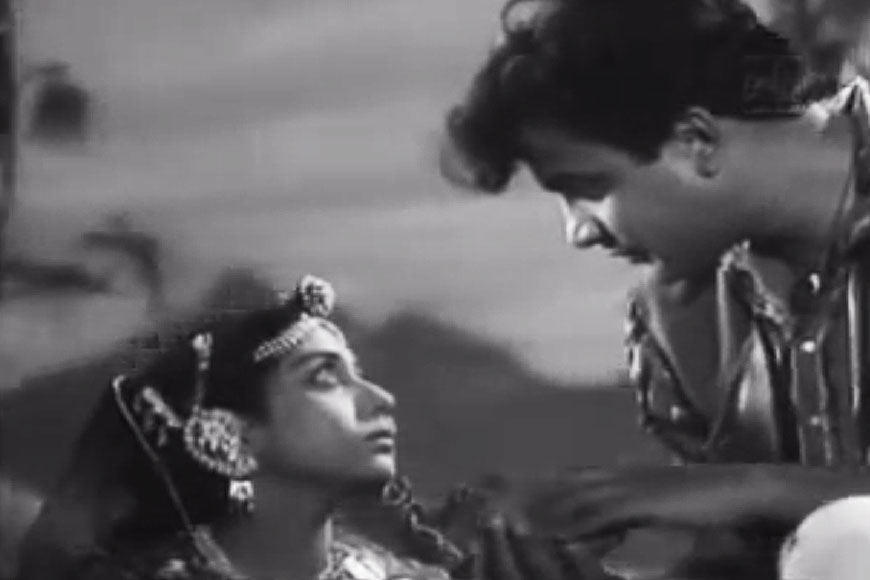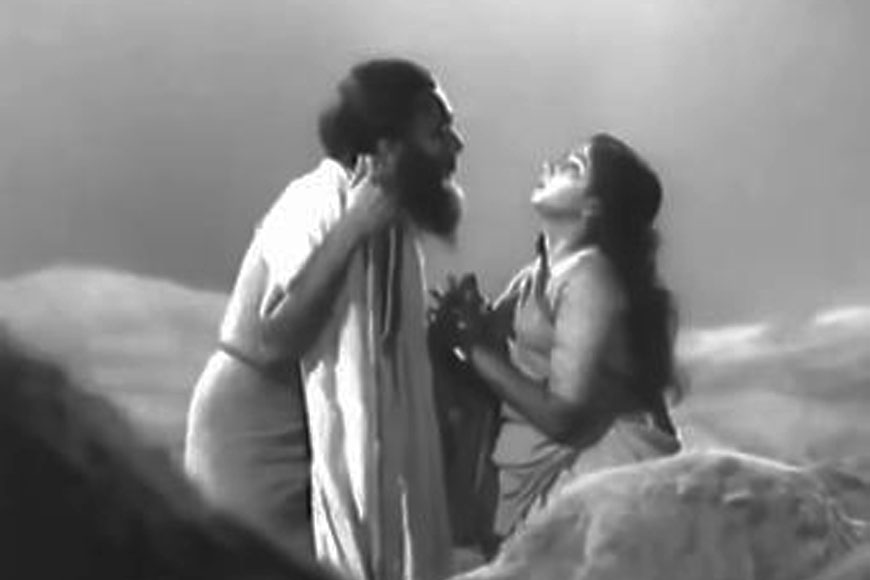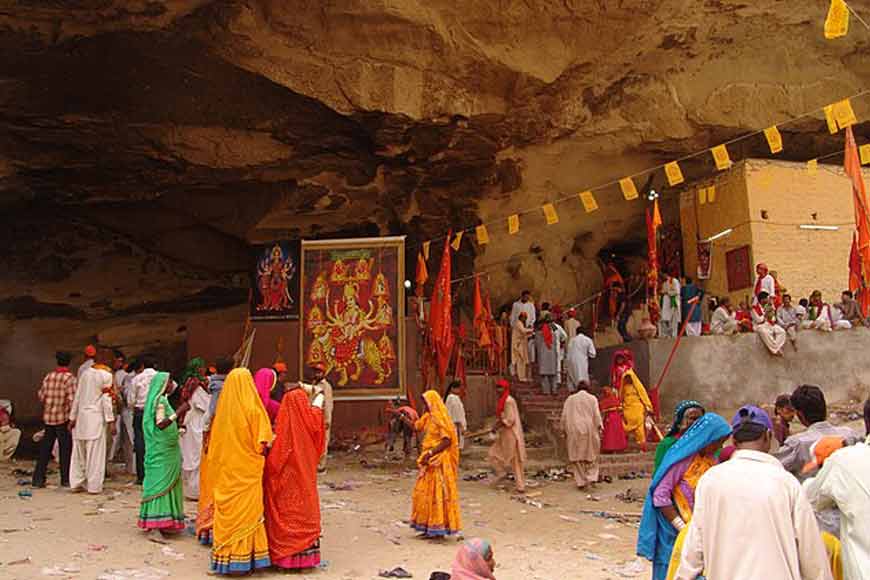The Life of Abadhoot- Rebel and Recluse to become a bestselling author —GetBengal story

The man who sought to build a house in Chinsurah, adjacent to Bankim Chandra Chattopadhyay's residence at Vande Mataram Bhavan, and was a dear friend of the acclaimed author Tarashankar Bandopadhyay, found himself in need of funds. Turning to his pen, he embarked on a literary journey that would make him a celebrated author, with thousands of copies of his debut book selling in a single day. However, 'Abadhoot,' the pen name he adopted, has since faded into obscurity.
His life mirrored the vivid narratives of his books, particularly his debut work, 'Marutirtha Hinglaj,' a travelogue dedicated to the Shakti Peeth, now in Pakistan. This book chronicled one of the most remote treks of its time. His literary success continued with several bestsellers, each a captivating journey through intricate characters and compelling narratives.
The cinematic adaptation of 'Marutirtha Hinglaj,' starring Uttam Kumar and Bikash Roy, became a blockbuster, vividly portraying life's journey through a web of complex characters. Characters like Popatlal Patel, seeking spiritual solace to overcome the guilt of female foeticide, and the blossoming love between Kunti and Thirumal, added depth and richness to Abadhoot's narrative, making 'Marutirtha Hinglaj' a standout among his works.

But who was Abadhoot? Originally born as Dulal Mukhopadhyay, he took sanyas and became Kalikananda Abadhoot, a pseudonym he also used in his books. His father, Anathnath Mukhopadhyay, came from Barishal of the then undivided Bengal to Kolkata around the time when World War I struck. He was a highly paid employee of Reily Brothers and was married to Prabhabati Devi of Baghbazar. They were a big family with 6 brothers and 2 sisters. Dulal Mukhopadhyay was an intelligent student who completed his graduation, and joined the Kolkata Port Commission office in 1930 as a storekeeper. He was married to Sukhamayi Bandopadhyay of Rishra who unfortunately died within six months of the birth of their only son, Amal, due to septicaemia.
Heartbroken by his wife’s death, Dulal found solace and purpose in India's freedom movement. Operating under the alias Rebati Mohan Mukhopadhyay, he covertly worked at the port, smuggling arms and pistols from British consignments to support the freedom fighters' cause. However, his involvement was short-lived. When the British authorities caught wind of his activities, Dulal fled to present-day Bangladesh, seeking refuge at his friend Brindavan Chandra’s house.
Despite his attempts to remain hidden, the police eventually discovered his whereabouts. Faced with imminent capture, Dulal made a daring escape, jumping into the turbulent waters of the Padma River on a stormy night. As the police opened fire, they believed he had perished in the river's fury. His friend, Brindavan Chandra, confirmed his demise to divert suspicion. Unbeknownst to all but Brindavan, Dulal survived both the gunshots and the river's wrath.
Twenty-two years later, Dulal resurfaced as Abadhoot, the acclaimed author, with the publication of his bestseller, Marutirtha Hinglaj. Despite assuming a new identity,many recognized him from his photograph in the book. His dedication of the book to Brindavan Chandra was a poignant acknowledgment of his friend's unwavering support and protection throughout those tumultuous years.
The publication of Abadhoot's first book mirrored the dramatic twists of his life. Despite being a friend of Tarashankar Bandopadhyay, who recognized the manuscript's potential, Gajendrakumar Mitra of Mitra & Ghosh publishers initially disregarded it. Undeterred, Tarashankar serialised Marutirtha Hinglaj as episodes in his magazine, where it garnered immense praise and a substantial readership.

It was Gajendrakumar’s mother who, captivated by the story, insisted her son reconsider the manuscript he had earlier rejected. Recognizing its burgeoning popularity, Gajendrakumar finally agreed to publish the book. The novel became an overnight sensation, providing Abadhoot with the financial means to fulfil his dream of building a house in Chinsurah, adjacent to Bankim Chandra’s residence. The success of Marutirtha Hinglaj not only secured Abadhoot's place in the literary world but also ensured his legacy as a celebrated author.
After his daring escape across the Padma River, Abadhoot embarked on a spiritual journey that took him far from Bengal. He made his way to Ujjain, where he visited the Mahakaleshwar Temple and embraced the life of a sadhu, adopting the new identity of Kalikananda Abadhut. Immersing himself in the practice of Tantra, he travelled extensively across India, particularly to sacred pilgrimage sites.
His journey eventually led him to Kashi, also known as Banaras, where he became the priest of the Kali temple. His experiences and spiritual quest in Benaras are vividly captured in his book 'Neelkantha Himalaya.' It was during his time in Banaras that he encountered Anandamayi Maa, a spiritual figure who taught him the Mauni Vrat (vow of silence). Abadhoot adhered to this vow for three years, abstaining from speaking with anyone, as part of his spiritual discipline and quest for enlightenment.
In addition to the Mauni Vrat, Abadhoot observed the Ajagor Vrat and Panchhi Vrat, which imposed strict dietary restrictions. Under these vows, he could not ask for food; he could only consume food given to him as 'Daan' (charity). Panchhi Vrat required him to finish his meal by early evening, after which he would not eat anything until dawn. Abadhoot adhered to these vows for years, wandering barefoot across the Himalayas, embodying the life of a true Sadhu.
During his travels, he absorbed the rich tapestry of colours and experiences around him, whether at the sacred waters of Manas Sarovar or along the path taken by Netaji Subhash Chandra Bose’s Indian National Army (INA) as they marched to Myanmar. His journey eventually led him back to Barishal, his ancestral home, where he met and married Sarojini Devi, whom he lovingly named Bhairavi.
Together, Abadhoot and Bhairavi embarked on a pilgrimage, visiting sacred sites such as Marutirtha Hinglaj, Kamakhya, and Nabadwip. In their 50s, Abadhoot decided to settle down on a plot of land he purchased in Chinsurah. However, lacking the financial means to build a house, he turned to writing once again, using his literary talents to fund his dream home. This marked yet another chapter in the remarkable life of Abadhoot, a man whose journey was as extraordinary as his literary legacy.

Abadhoot's life took another turn after settling down with Bhairavi. His strained relationship with his son, Amal, living in Nadia, continued to trouble him. Despite this, he arranged Amal's marriage, taking on the responsibilities of a father.
Devastation struck once more when Bhairavi passed away, plunging Abadhoot into deep sorrow. He spiralled into depression, turning to alcohol and neglecting his own well-being. Becoming a recluse, he isolated himself from the world, consumed by grief.
Within just eight months of Bhairavi's death, Abadhoot himself passed away in 1978. Despite the brevity of this final chapter, his legacy endured. In this short span of time, he penned 23 best-selling novels, leaving behind a literary treasure trove that continues to captivate readers even today. His life, a tapestry woven with extraordinary experiences and profound wisdom, remains an enduring testament to the power of resilience, passion, and the human spirit.










